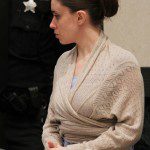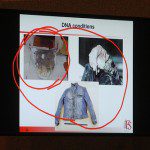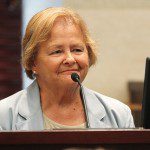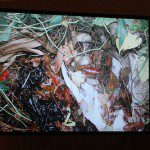On Day 24 in the Casey Anthony murder trial, jurors heard from five defense witnesses on Tuesday, including a touch DNA expert from the Netherlands, who occupied most of the time on the stand.

Richard Eikelenboom on direct examination by lead defense attorney Jose Baez, told jurors he would have expected to find DNA on Caylee’s remains even though they had been exposed to the environment. He showed jurors photos of various items, including a jacket and panty hose, which he said had been exposed for a while to environmental conditions and from which he had been able to extract DNA, thus helping to provide evidence in these case.
On cross-examination however, prosecutor Jeff Ashton did get Eikelenboom to concede that environmental factors, such as heat and water, as well as bacteria, have a destructive effect on DNA. He also agreed it would be very difficult to get DNA from skeletal remains, such as Caylee’s, which had been exposed to environmental effects for several months.
Eikelenboom also admitted that he had not re-tested the duct tape found on Caylee’s skeleton, although he told jurors he had mentioned to the defense that his laboratory could investigate the tape further. None of the items from which Eikelenboom was able to extract DNA was skeletal remains.
Ashton tried to convey to jurors that Eikelenboom was not specialized in DNA testing and is currently working to complete his doctorate in the field.
Eikelenboom, who had not submitted a report and was only deposed as recently as last Saturday, was disallowed from providing testimony about DNA in connection with the stain, which prosecutors say was decomposition fluid, found in the trunk of Casey’s Pontiac Sunfire.
Prosecutors have charged Casey Anthony with first degree murder in the death of her two-year-old daughter Caylee. They believe that she poisoned the toddler with chloroform and placed duct tape over the child’s nose and mouth, before dumping the body in the woods near the Anthony family home.

Dr. Marcus Wise, a research scientist at the Oak Ridge National Laboratory was called to the stand. Wise works closely with Dr. Vass who testified for the prosecution. He told jurors that large peaks of chloroform were found on carpet samples from the trunk of Casey’s car, although he was unable to quantify the amount.
Baez on direct examination of Wise attempted to convey that because Oak Ridge is a research laboratory, they do not necessarily have quality controls in place and hence the air samples test results are suspect. He also questioned Wise’s not being able to quantify the amount of chloroform found.
But Wise said that when he first saw the chloroform from the carpet samples, it raised a question because he did not expect to see it. He told jurors there was no way to make a quantitative analysis given that the rate of evaporation is unknown, along with many other variables.
Baez on re-direct tried to get Wise to say that the hand-held device, nick-named, “Labrador”, that he co-invented and which was used in the air sample testing, would earn him royalties, if adopted by law enforcement. But Wise said that, if that were the case, royalties would be absolutely minimal.
Before Eikelenboom and Wise testified, the defense recalled to the stand, Jennifer Welch, a crime scene investigator with the Orange County Sheriff’s Office. She had previously testified on three occasions for the prosecution.
Welch told jurors that she had photographed the crime scene and there was vegetation and tree roots around and growing through Caylee’s remains. She said that some vegetation had to be cleared in order for investigators to view the area and to remove the remains.
Next a forensic botanist, Dr. Jane Bock was called.
Bock testified she had examined the crime scene, reviewed reports by crime scene investigators, as well as from the medical examiner, Dr. G.

Bock told jurors that Caylee’s remains, which were found in a wooded area off Suburban Drive near the Anthony family home, could have been there as recently as two weeks before they were found, although photos of obvious root growth into the toddler’s bones were shown.
On cross-examination, Ashton made short work of Bock getting her to admit that the child’s remains could have been in the wooded area much longer in view of the extensive root growth up through the bones and a canvass bag found nearby.
Ashton reminded Bock that one of Caylee’s bones was buried in muck nearby. Bock responded that a dog could have buried the bone, or Coyotes. Ashton responded that Florida is not blessed with Coyotes.
Yuri Melich, the lead detective on the case with the Orange County Sheriff’s Office, was recalled to the stand.
Baez asked Melich whether he had found chloroform in papers, containers, rags, products, receipts of purchases of chloroform and chemistry kits, during his three searches of the Anthony family home. In each case, Melich replied that he had not found any evidence of chloroform.
Baez tried to point out that Melich had not undertaken the search warrants in a timely manner in looking for evidence of chloroform at the Anthony family home.
But on cross-examination Linda Drane Burdick got Melich to say that when the first two search warrants were done, he did not have information of the high levels of chloroform that were found in Casey’s car trunk.
Melich also said when the two warrants were executed, detectives were still, up to that point, looking for a living child.

Casey’s defense attorneys have claimed that Caylee accidentally drowned in the family swimming pool and George Anthony, Casey’s father covered up the crime. The defense has also said that their client was sexually abused by George, and her brother Lee.
Casey, if convicted, could face the death penalty.


